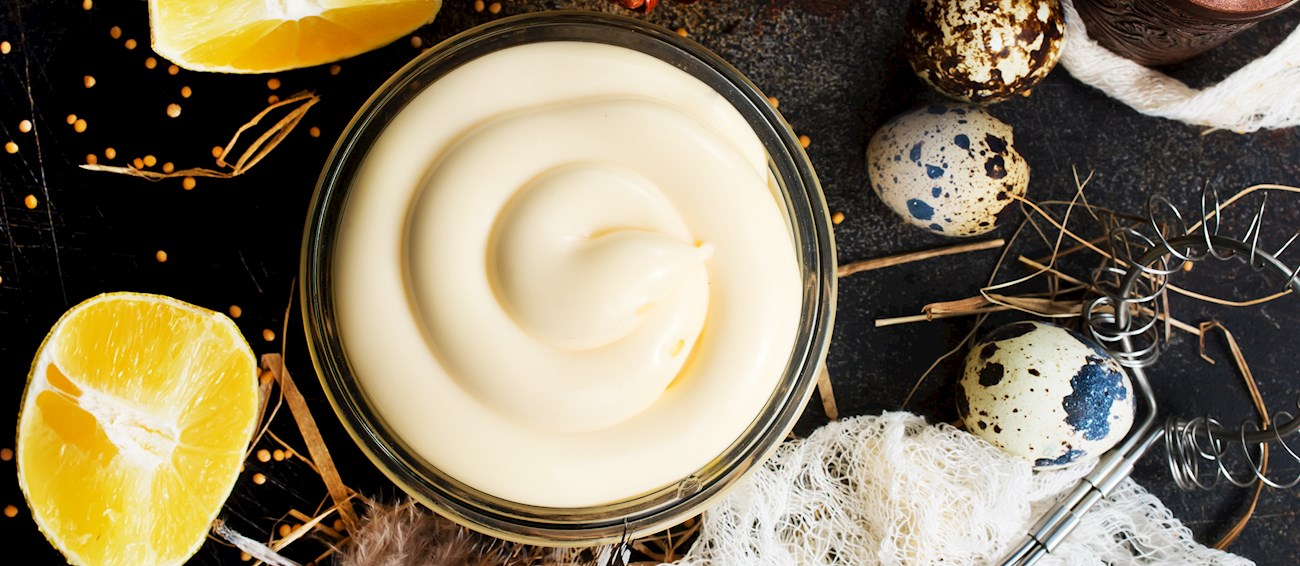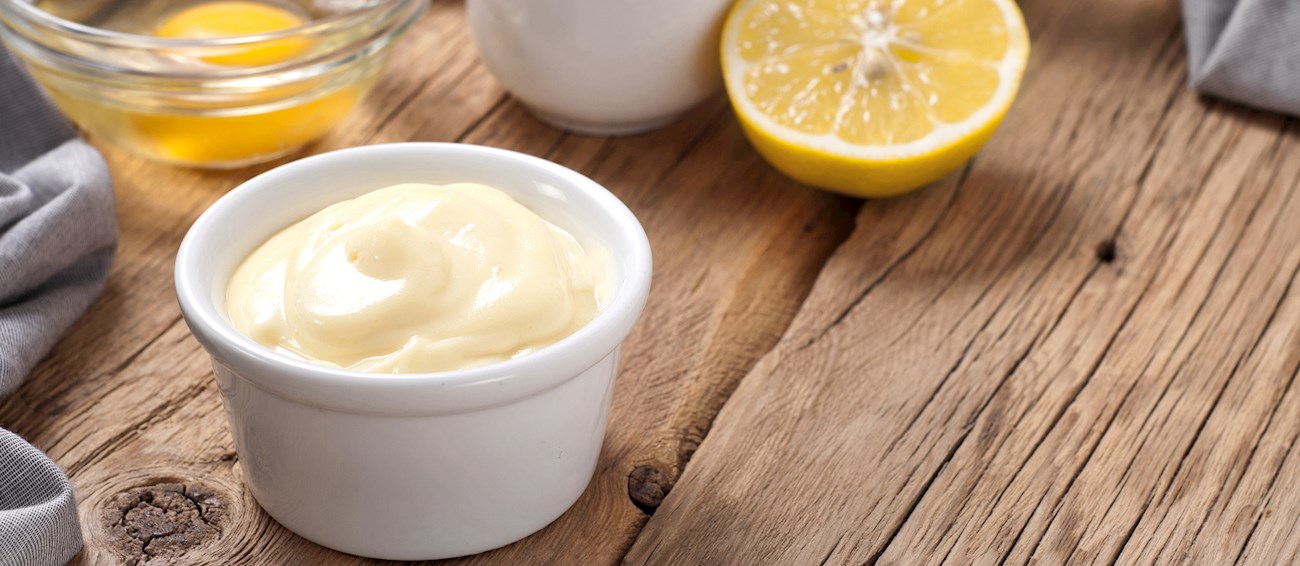Mayonnaise
(Mayo, Majoneza, Majonez, Maionesa)
Undoubtedly one of the world’s most well-known condiments, mayonnaise is a type of emulsion that’s made by combining egg yolks with oil, lemon juice or vinegar, seasonings, and optional flavorings. Although similar combinations of eggs and olive oil have been part of the ancient Egyptian and Roman cuisines, the version of mayonnaise that we’re all familiar with today was most likely created by one of France’s leading chefs, Marie-Antoine Carême.
As with many other world-famous culinary creations, the exact origins of mayonnaise have long been the subject of dispute, with both France and Spain claiming the rights for the sauce’s birthplace. There are several theories about the origins of this culinary invention; however, the one that’s been most widely accepted says that the sauce was invented in 1756 by the Duc de Richelieu’s chef in honor of the Duke’s victory at Port Mahón, a city on the Spanish island of Menorca. Read more
Other conflicting stories suggest that the sauce is of Spanish origins, while some claim that it originated from the French cities of Bayonne or Les Mayons. When it comes to mayonnaise’s name, there are also multiple theories behind the word’s evolution.
The original name is believed to have been either mahónnaise, after the Spanish city of Mahón, or bayonnaise, after the French city of Bayonne, and some suggest that it has changed to mayonnaise because of a printing error.
According to some culinary historians, the word mayonnaise is thought to have been derived from the old French words moyen (egg yolk) or manier (or magner), meaning to blend or to stir. Regardless of the origins, this simple creation has certainly managed to become an essential part of the world’s culinary heritage and one of the most beloved (and hated) condiments in the history of food.



